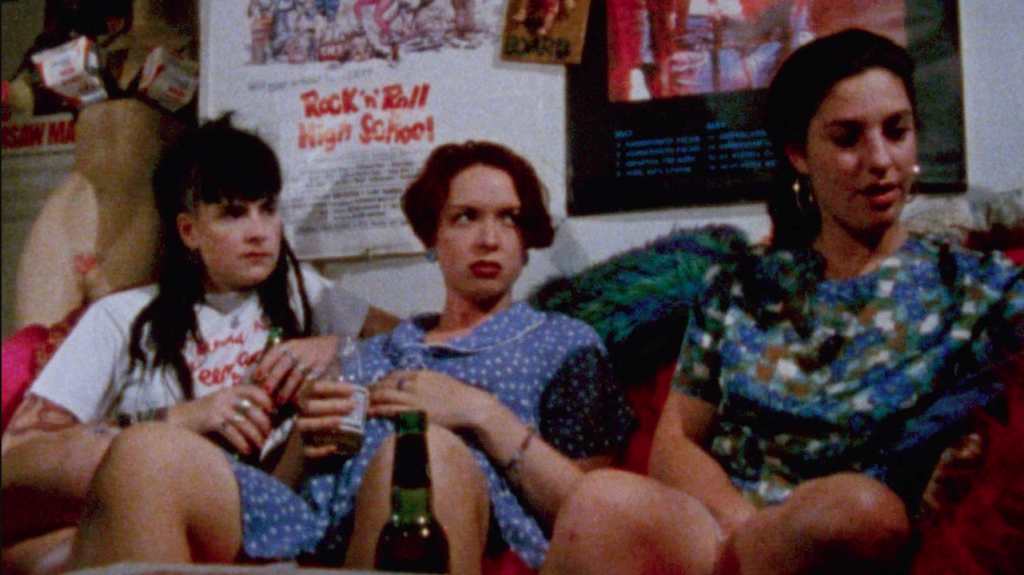
Sarah Jacobson’s lone feature Mary Jane’s Not A Virgin Anymore (1996) is a film drenched with the youthful exuberance for creativity. Every frame of this underground masterpiece conveys Jacobson’s love and commitment to her art. It’s a totally punk movie that embraces its DIY aesthetics to lend its dramatic material a documentary sense of realism.
Mary Jane’s Not A Virgin Anymore opens with the title character Jane (Lisa Gerstein) losing her virginity awkwardly at St. Davis’ cemetery in Minnesota and ends with her receiving a vibrator as a gift from her two mentors Grace (Marny Snyder Spoons) and Ericka (Beth “Ramona” Allen); thus closing a circuit of narrative cycles. Jacobson utilizes narrative repetition with slight variation to gradually reveal Jane’s growth. The film primarily stages all of these events at the Victoria Theater, a one screen movie house, where Jane works with a bunch of twenty-somethings. Herself a high school senior, Jane’s romantic notions, largely informed by the movies she watches, shift and develop as she becomes involved in the lives of her co-workers.
Often described as a feminist Clerks (1994), Mary Jane’s Not A Virgin Anymore is actually a much more complex and politically poignant film. By just being feminist Mary Jane’s Not A Virgin Anymore does two important things. Firstly it takes Kevin Smith’s decidedly suburban style of comedy and reveals the latent misogyny therein. Secondly, Jacobson opts to discuss frankly topics such as masturbation, unwanted pregnancy, rape, and virginity rather than make dick jokes, homophobic gags, or casual observations regarding the female sex organ (again, Smith’s latent misogyny). What Jacobson’s film shares with Clerks is a sense of working class unity and rebellion.
It cannot be stressed enough how valuable Jacobson’s matter of fact approach to her subjects is. Mary Jane’s Not A Virgin Anymore accomplishes more than better known films like Girlfriends (1978) or Booksmart (2019) in bringing to the screen very honest depictions of female friendships, sexuality, and humor. While these two more popular films embrace narrative molds popularized by men (Judd Apatow and Woody Allen), Jacobson, in true punk fashion, flies by the seat of her pants to assemble whatever pieces fit the puzzle of her plot. Mary Jane’s Not A Virgin Anymore is, first and foremost, an exercise in resourcefulness motivated by necessity.
To top it off Mary Jane’s Not A Virgin Anymore is also a film about cinephiles and movie culture. Almost all of the characters in the film work at the theater and give a voice to all of us who grew up in projection booths or popping corn at the picture show in the nineties. Jacobson works in a number of on-point references and jokes about movies that range from Eraserhead (1977) to Rebel Without A Cause (1955). Between gender, movie fandom, and age differences Mary Jane’s Not A Virgin Anymore is packed with different, often overlapping, communities.
Through these social overlaps Jacobson denounces all of the rigid extremes put in place by both society and the conventions of movie narratives. Mary Jane’s Not A Virgin Anymore is full of characters with fluid identities who flutter from one group to the next. The lesson Jane learns in the film is essentially the fundamental principle of Jacobson’s art: everything and everyone is transient.
